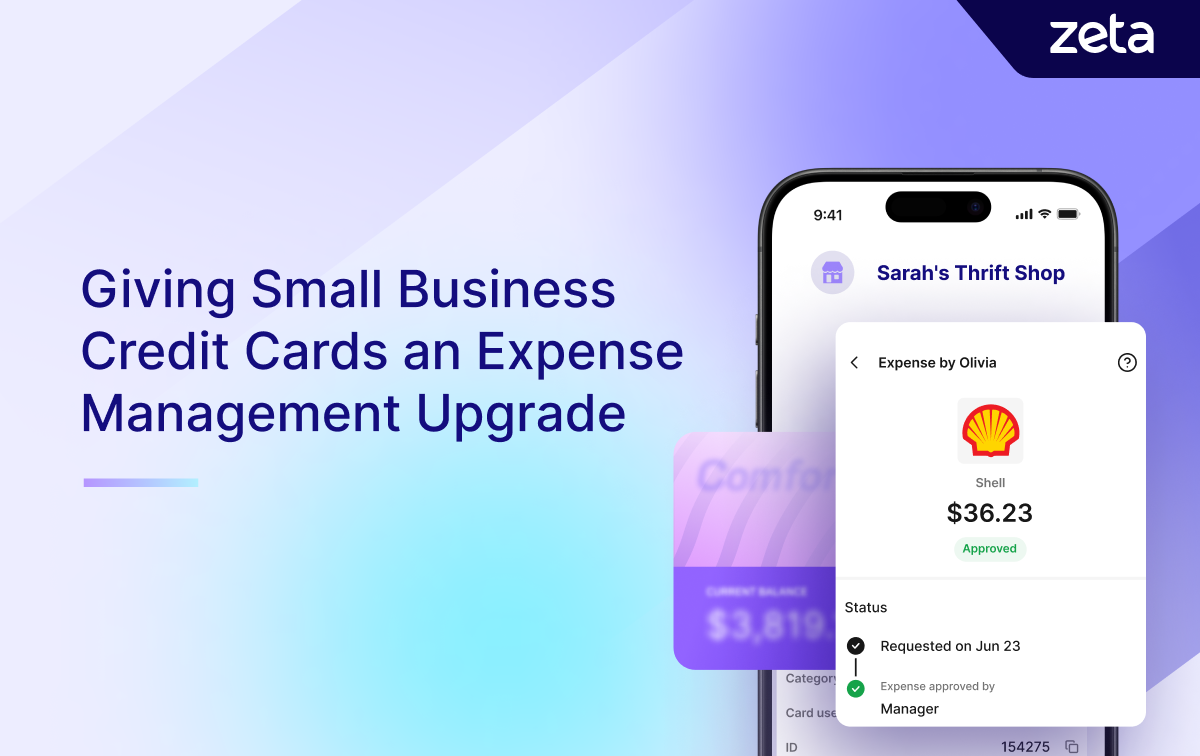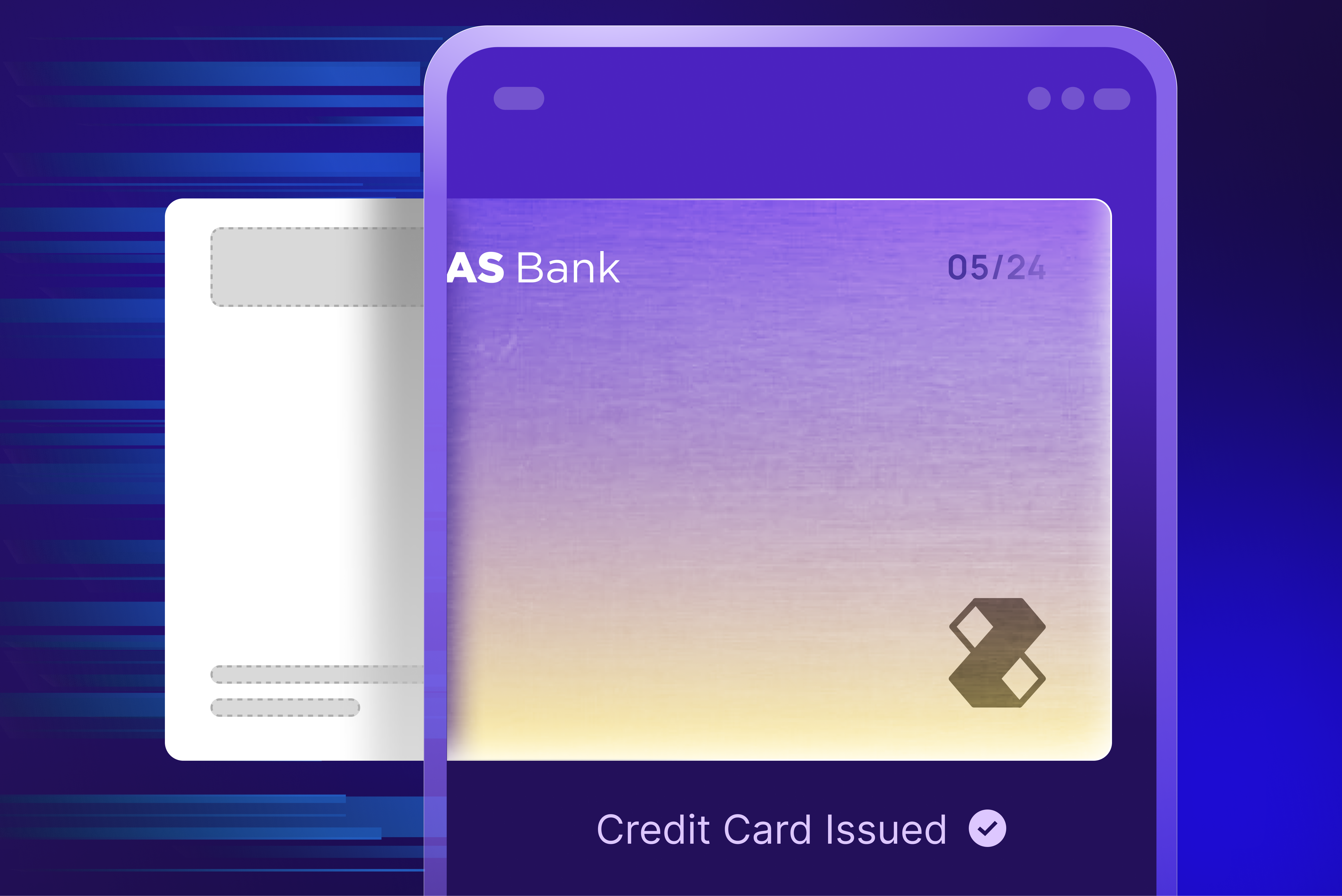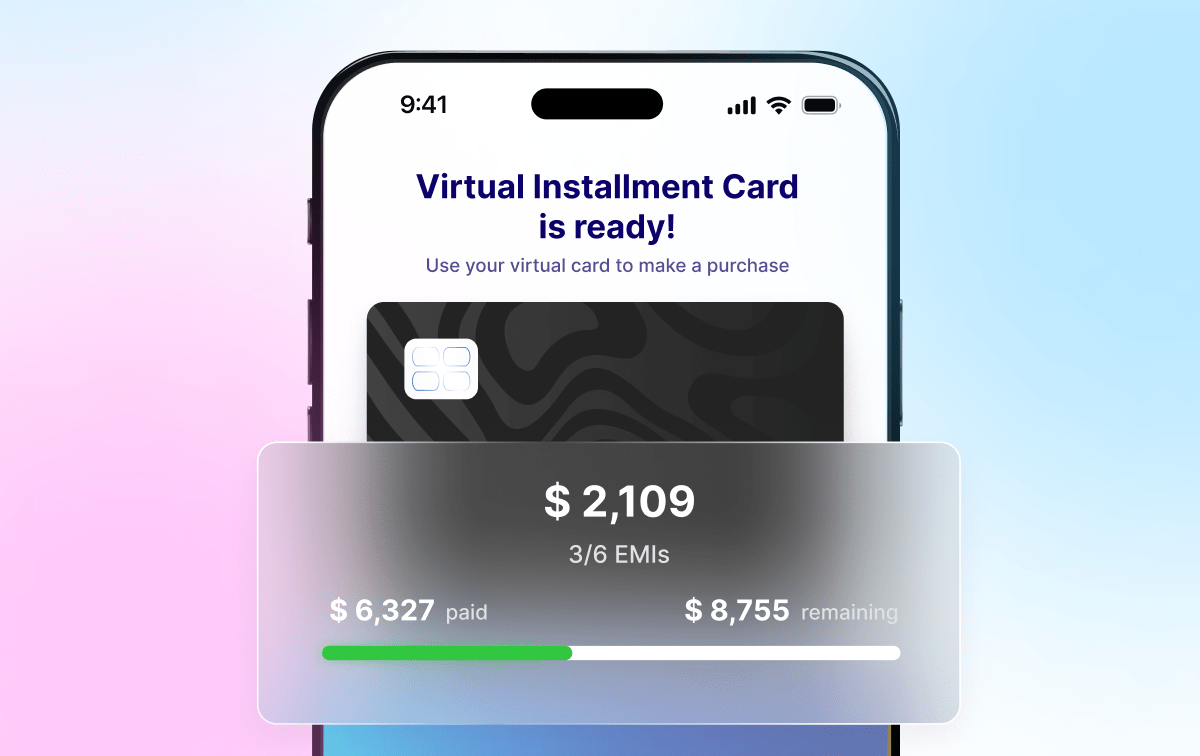Giving Small Business Credit Cards an Expense Management Upgrade

Contents
- SMBs Need Integrated Expense Management Solutions
- Why Existing Card Solutions for SMBs Fail
- How Next-gen Business Cards Can Transform Expense Management
- The SMB Expense Management Experience
- The Opportunity for Issuers
- The Promise of Next-gen Capabilities for SMBs
Small and medium businesses (SMBs) are the neglected powerhouses of the US economy. As many as 17% of publicly traded companies worth $10 billion or more were SMBs at some point in the last 25 years1.
Millions of such businesses need financial services like credit cards to reach their potential, and present issuers with a massive business opportunity. Medium-sized businesses demonstrate stickier relationships with their financial institutions (FIs) with an average tenure of 15 years2. They also spend more, averaging $13,000 per month on credit cards3, while retail consumers spend ~$1,6004.
But currently, credit card offerings are either designed for corporates (making them too complex and expansive), or retail customers (too simple and narrow in scope).
Issuers need to address SMBs’ unique demands from their credit card provider to win this market.
SMBs Need Integrated Expense Management Solutions
As many as 79% of small employers in the US use credit cards for business expenses5. They help small businesses build credit history, access a revolving line of credit, and most importantly, manage cash flows.
However, traditional credit cards have failed to root out SMBs’ cash flow challenges. According to PYMNTS Intelligence, 70% of SMBs have less than four months of cash reserves to cover operational expenses6. Day to day visibility of their cash reserves and control over expenses become a challenge with manual expense management and reliance on paper bills.
As cash flow management becomes critical for their survival, SMBs are demanding more comprehensive cash management services from FIs to better maintain this delicate balance. At least 70% SMBs are in the market for better digital tools for their needs and willing to switch to institutions that offer them7.
Why Existing Card Solutions for SMBs Fail
Existing credit card solutions fail to assist SMBs with expense management. Here’s why:
- Over-reliance on a single card: Multiple employees are authorized to make business expenses in small businesses. However, businesses are often issued a single card, creating logistical challenges and complicating expense categorization.
- Inefficient expense tracking: Traditional credit cards are not linked to any expense management tools. Small business owners track expenses manually, increasing operational overhead. This could also lead to bookkeeping errors like inaccurate data entry and misclassification of expenses that are expensive to rectify in the long run.
- Opacity in spending: Small business owners have low visibility into real-time credit card spending. This results in a limited view of expenditure and how it stacks up against earnings, and an inaccurate assessment of overall business cash flow.
- Reporting challenges: Paper receipts must be manually verified for reimbursement or accounting purposes. This process can take a long time, delaying payments and complicating bookkeeping.
How Next-gen Business Cards Can Transform Expense Management
Next-gen processing platforms enable issuers to build intelligent real-time experiences around the SMB credit card to deliver simple, seamless expense management capabilities to small employers and their staff. Some of these experiences can include:
Employee card management
Small business owners can digitally issue and activate add-on business credit cards to employees in minutes. This gives employees the flexibility to make authorized payments at any time, eliminating time-consuming dependencies.
Card controls
Employers can set limits for the maximum amount of spending, transaction types and merchant categories for employee business cards. This ensures proper allocation of funds, adherence to expense policies, and helps avoid overshooting budgets.
Intelligent expense categorization
Next-gen enabled cards can categorize business spends in real time. Business owners and managers can thus track and control the categories of spend on their business credit cards. They can also set and track budgets across each category and draw insights on where the business has spent the most across time.
Real-time notifications
Real-time notifications on transactions, expense report submissions and expense approvals significantly enhance business owners’ control and visibility over their cash flow and improves the employee experience.
Expense reporting
Digital interactions built around business cards allow employees to submit receipts against expenses made by them easily on the card app. They can simply upload pictures of the receipts on the app, eliminating the need to save paper receipts and manually file expenses.
Expense approval workflows
The submission of a receipt by an employee triggers employers to get a consolidated view of the expense amount, category, date, and receipt on their app. They can review this data and approve or deny the request instantly at the click of a button.
The SMB Expense Management Experience
Our latest eBook The Future of Cards is Now dives into several transformative credit card experiences that can be built on next-generation card technology. Here, I discuss two expense management experiences tailored for small and medium businesses from the eBook.
Expense controls and monitoring
A small business owner, Sarah, can add a card for a particular employee, Olivia, through her card app. The card is issued instantly, and Sarah can use the controls in her app to curate the categories across which this card can be used, add an upper limit to monthly spends, and even enable select transaction types on the card.
While giving Sarah immense convenience in facilitating timely business purchases, this feature also helps prevent overspending and unauthorized transactions. Predefining expense categories speeds up expense reporting, and customizable controls encourage adherence to expense policies.
Expense reporting
Olivia can use an in-app AI assistant to submit receipts from her photo gallery against the transactions made on her card. As seen in the use case here, the assistant prompts Olivia for an outstanding expense for receipt submission. When Olivia uploads the receipt image, the AI assistant uses optical character recognition (OCR) and generative AI technologies to read the image and submit the expense.
The expense submission triggers an approval workflow in Sarah’s app. Sarah is prompted to approve or decline the reimbursement request instantly. Olivia is likewise informed of the decision in real time.
The automated expense management workflow is deeply integrated into the business credit card app, allowing for seamless workflows like raising and approving business expenses. It helps create a low-touch expense management model where sharing and verification of receipts are automated, requiring only a single tap from the manager or employer at the point of decision.
The expense reporting interface is easy to use, resulting in smoother accounting and improved employee engagement.
The Opportunity for Issuers
Fintechs like Brex and Ramp are improving their share in the business payments space with bespoke expense management solutions for SMBs. However, these solutions are built on credit cards owned by issuers.
With next-gen capabilities, card issuers can host the core product and the value-added expense management services themselves, winning this critical customer segment back.
Personalized expense management, real-time card-issuance and AI-assisted expense reporting can help issuers better engage their small business customers and accrue the following benefits:
- Added value in expense card utilization increases card spend
- Instant virtual card issuance drives usage fee revenue
- Granular expense insights increase cross-sell potential
- Seamless expense management encourages increased card usage
- Value added service improves customer loyalty
- Detailed expense data improves target marketing
The Promise of Next-gen Capabilities for SMBs
Small and medium businesses face unique challenges that can no longer be addressed by repurposing retail or corporate banking products. With limited credit access to credit, erratic cash flows, unique operational challenges, SMBs desperately need better financial tools tailored to their scale.
Modern business credit cards built on next-generation capabilities offer a critical solution in this landscape. By replacing cumbersome manual processes with intelligent automation and rampant personal credit card usage with a flexible business credit card, banks can position themselves to serve this underserved yet vital segment of the economy.
References
- McKinsey, America’s small businesses: Time to think big | October 2024
- Deloitte, B2B payments for the middle market |
- J D Power, 2023 US Small Business Credit Card Satisfaction Study | December 2023
- LendingTree, LendingTree Study | January 2024
- JPMorganChase, Cash or credit: Small business use of credit cards for cash flow management | May 2023
- PYMNTS Intelligence, From Cash Flow Pain to Working Capital Gain: Automated AR/AP Solutions for SMBs | June 2024
- PYMNTS Intelligence, The $150B Question: Can Community FIs Capture the SMB Digital Banking Opportunity? | July 2024



